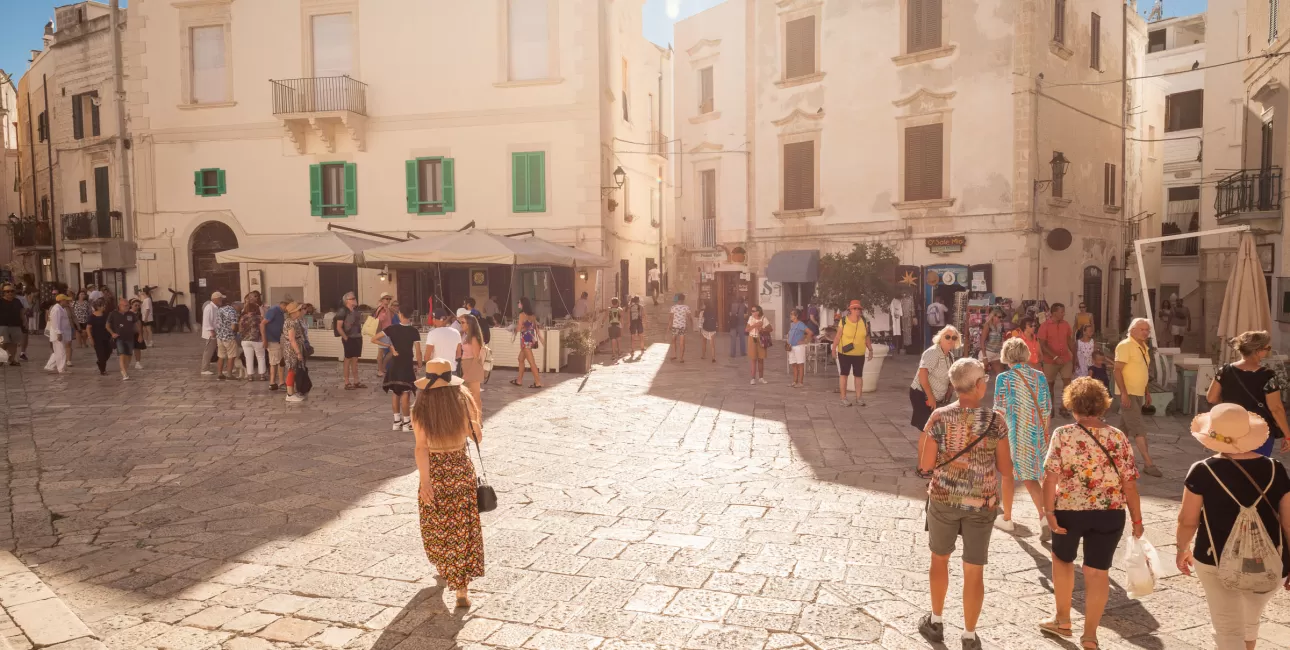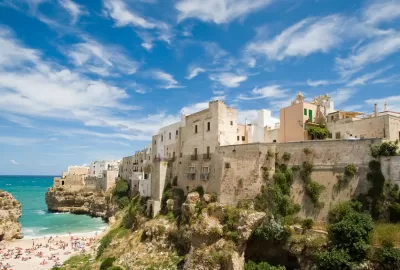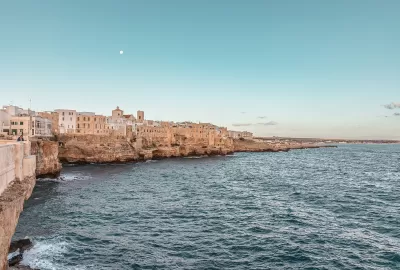While walking through the medieval streets of the historic center, try to imagine the look of it a few centuries ago. It was protected by a large wall, surrounded by a moat, to strengthen the village core. The walls were restored and enhanced in the Sixteenth Century, during the Venetian domination. Today we can only see a long stretch of the remaining wall overlooking Piazza Garibaldi, incorporated in the Marquis' Palace. Near the sea, on the eastern side of Lama Monachile, stands a watchtower and defense, the last examples of a system of angular towers built along the fortifications, which rendered the city impregnable, as defined by the documents of the time.
In Piazza Vittorio Emanuele II stands the church, Santa Maria Assunta, dedicated to the Blessed Virgin of the Assumption, but better known as the Chiesa Matrice or Mother Church. Probably built on the remains of a pagan temple, it was consecrated in 1295. The base of the bell tower dates back to the 1500s, but was completed in later periods. Entering the church through the side door, on the right, we see a chapel, which houses the important nativity scene of Stefano da Putignano. Designated a national monument, the national mint printed a postage stamp, in 1995, bearing the image of this masterpiece. The church also houses other interesting works by Apulian artists. The Pieta in the chapel of the blessed Sacrament to the left of the main altar, and the Madonna and Child at the right of the main altar in the chapel of Our Lady of the Rosary. The building is laid out in the shape of a latin cross. On the south aisle, you can see a stone statue of San Vito sculpted by an unknown artist. The pulpit is recognized as dating back to the sixteenth century, while the wooden choir loft behind the high altar and the monumental organ, built by De Simone are from the early Eighteenth Century. In 1613, in the open dome, a chapel was built to guard the relics of St. Vito, a bone fragment of the knee and an arm. Here are also found the preserved statues of Crescenza and Modesto as well as the treasure which accompanies St. Vito during the procession. In 1992 the treasure was stolen, but later thanks to donations from many of the faithful, including many emigrants living abroad, it was replaced. The sacristy holds interesting paintings from the Seventeenth and Eighteenth centuries. Here too is the multi paneled painting by Bartolomeo Vivarini depicting, which dates back to the Fourteenth Century.
The medieval Clock Palace, once the seat of the town hall, is found also in Piazza Vittorio Emanuele II, where you will also find the Cathedral. There were two ground floor rooms, both were warehouses, until the back room was later converted into a prison. You can see an unmistakable sign, a grating, to right side of the building, on Via Tanese, the ancient Judea, which led into the Jewish Ghetto. Looking at the façade as it is now, you would not think that the building was of medieval origin, especially while admiring the sculpted ornaments in the rococo style windows. Centered at the top of the building, a clock was installed in the second half of the eighteenth century, replacing the original sundial that is still visible today. The peculiarity is that the clock is still adjusted by hand and continues to mark time. Next to the clock palace, there is an altar set up to St. Vito, the patron Saint of Polignano, during the annual feast.
















